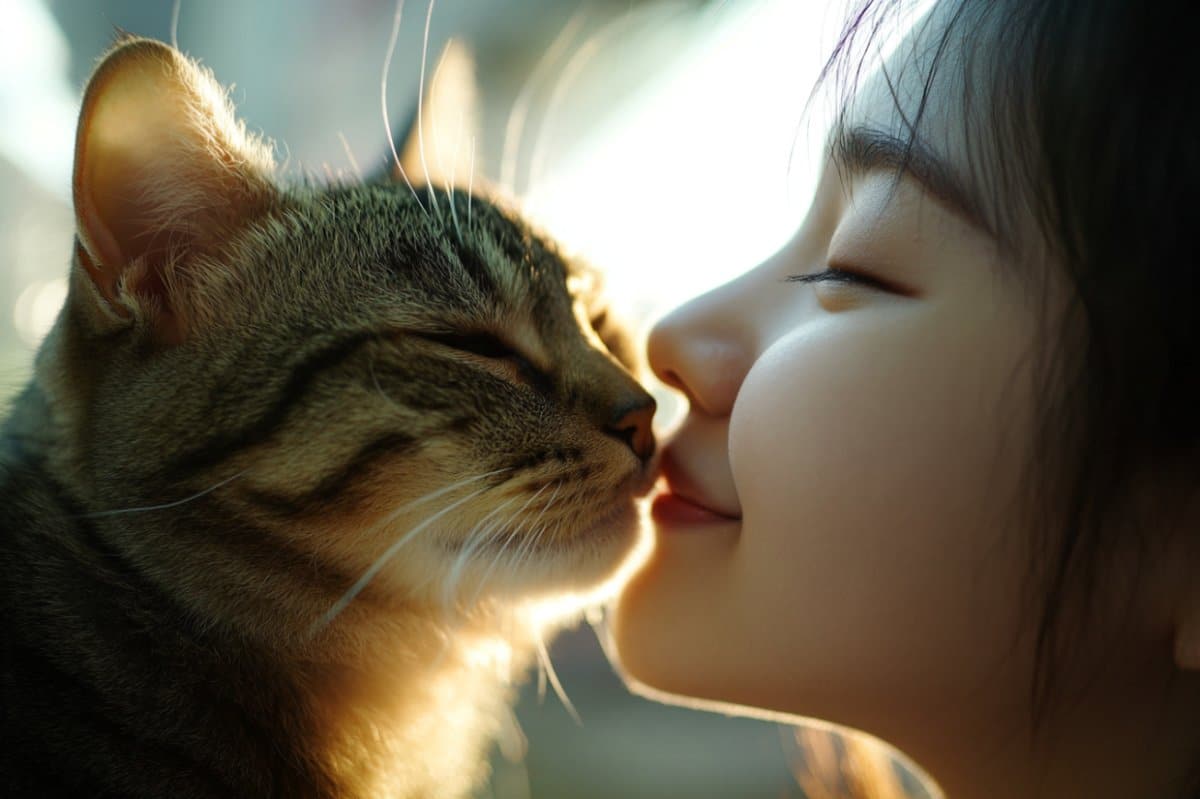Summary: A new study has found that domestic cats can distinguish between their owner’s scent and that of a stranger using their sense of smell alone. When presented with scent samples from familiar and unfamiliar humans, cats consistently spent more time sniffing the unfamiliar scent.
This behavior suggests cats may use olfaction to recognize and explore new individuals, much like they do with other cats. The study also observed right-to-left nostril shifts, hinting at brain hemisphere preferences during scent investigation.
Key Facts:
- Scent Discrimination: Cats sniff unfamiliar human odors longer than familiar ones, suggesting recognition.
- Brain Hemisphere Use: Cats first used the right nostril with new smells, switching to the left as familiarity grew.
- Behavioral Insights: Male cats’ sniffing behavior varied with personality, but female cats showed no such variation.
Source: PLOS
Cats spend longer sniffing the odor of a stranger than that of their owner, suggesting that they can identify familiar humans based on smell alone, according to a study publishing May 28, 2025 in the open-access journal PLOS One by Yutaro Miyairi and colleagues at Tokyo University of Agriculture, Japan.
Cats use their sense of smell to identify other cats and communicate with each other, but whether they can also use smell to distinguish between different humans has not previously been studied.

The researchers investigated whether cats are able to distinguish between familiar and unfamiliar humans based on smell alone. They tested thirty domestic cats by presenting them with plastic tubes containing swabs that had been rubbed under the armpit, behind the ear, and between the toes of either their owner or a human they had never met.
The cats spent significantly longer sniffing unknown odors than those of their owner or an empty tube.
The researchers also found that cats were initially more likely to sniff unknown odors with their right nostril but later switched to their left nostril as they became more familiar with the smell.
Participating cat owners were also asked to complete an online questionnaire to assess the cat’s personality and their relationship with their owner.
Male cats with neurotic personalities tended to sniff each tube repetitively, whereas males with more agreeable personalities sniffed the tubes more calmly. However, there was no effect of personality on the behavior of female cats during the experiment.
The results suggest that domestic cats can discriminate between familiar and unfamiliar humans based on their odor, but it remains unclear whether they can identify specific humans based on smell alone.
The finding that cats preferred to investigate new smells with their right nostril suggests that they may favor different hemispheres of their brain for different tasks — a phenomenon that has previously been demonstrated in other animals including dogs, fish and birds.
The authors add: “We suggest that cats use their olfaction for the recognition of humans. Also, we record characteristic rubbing (marking) behavior occurring after sniffing, indicating that sniffing may be an exploratory behavior preceding the rubbing of odor (marking) in cats.
“This relationship warrants further investigation along with the theory of whether cats are able to recognize a specific person from olfactory cues.”
About this olfaction and neuroscience research news
Author: Hanna Abdallah
Source: PLOS
Contact: Hanna Abdallah – PLOS
Image: The image is credited to Neuroscience News
Original Research: Open access.
“Behavioral responses of domestic cats to human odor” by Hidehiko Uchiyama et al. PLOS One
Abstract
Behavioral responses of domestic cats to human odor
People all around the world live with cats and cats engage in many social behaviors toward their owners.
Olfaction is one of the most important sensory abilities in cats, yet its role in recognizing humans remains unclear. In this study, we assessed the role and characteristics of olfaction in the discrimination of known or unknown humans by cats using ethological methods.
Whether cats exhibit a lateralization of nostril use in response to a variety of olfactory stimuli, exposure experience, inter alia, was investigated.
Cats were simultaneously presented with three odor stimuli: that of a known person (owner), an unknown person, and a blank control.
Responses to the cat 2 scale (Feline Five) and the cat–owner relationship scale (CORS) were collected from cat owners through questionnaires.
It was observed that cats spent a substantially longer time sniffing the odor of an unknown person than that of a known person, indicating the use of their sense of smell to distinguish between heterospecific (human) individuals.
While responding to odor stimuli from unknown humans, the cats displayed marked lateralization in the use of one nostril or another.
An association was observed between the first odor the cat sniffed among known, unknown, and blanks and the personality score. A strong correlation was found between the number of repetitive sniffing odors and personality scores in male cats.
No association was evident between the cat’s behavior and the cat–owner relationship score.
Rubbing of their faces against an object immediately after sniffing it was observed and thus a possible relationship between the olfactory exploration and subsequent rubbing (odor-marking) behavior in cats is postulated.
However, this relationship warrants further investigation along with the theory of whether cats are able to recognize a specific person from olfactory cues.







